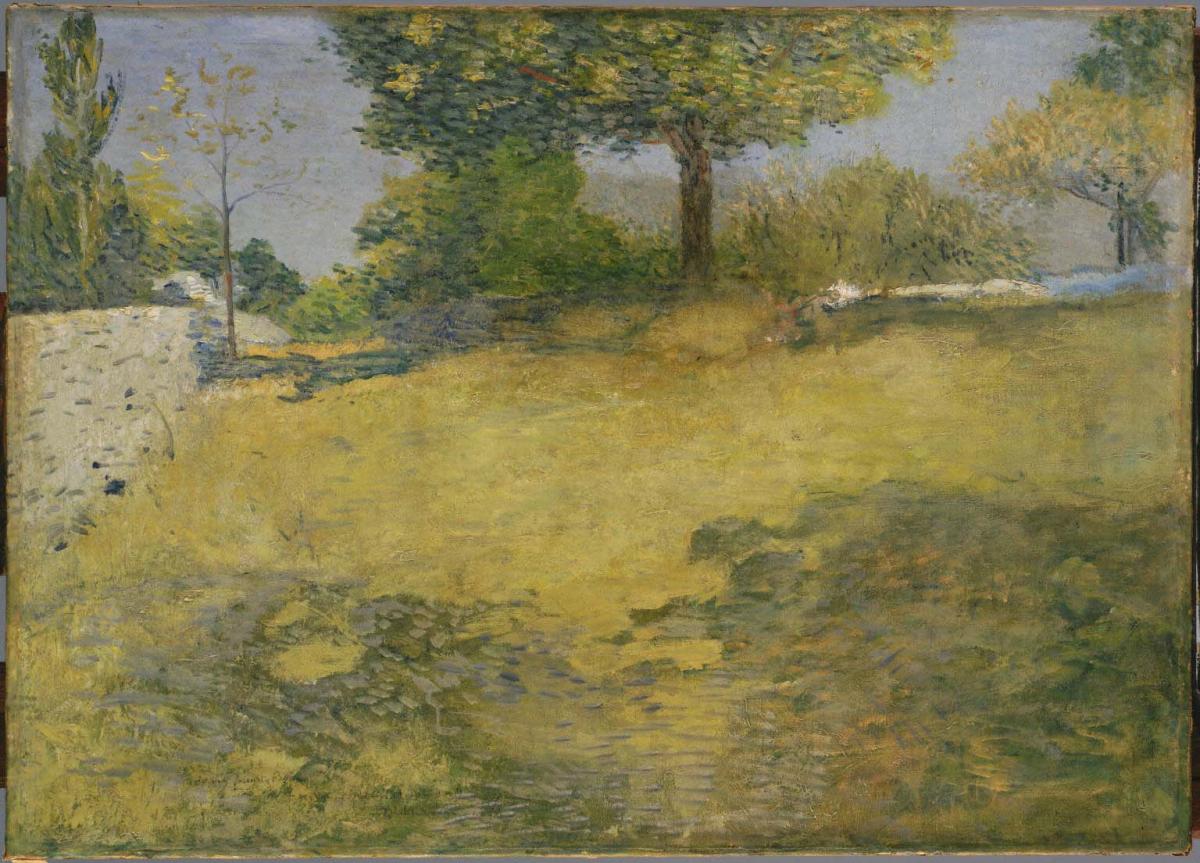The High Pasture
Julian Alden Weir ( between 1899 and 1902 )

Julian Alden Weir was born at West Point, New York on August 30, 1852. He took art classes at the National Academy of Design before traveling to Paris in 1870 to study under Jean-Léon Gérôme. Although Weir was celebrated as an American impressionist, he had a negative reaction when he first encountered impressionism in Paris. Describing the first works he saw as “worse than a Chamber of Horrors,” he initially maintained an allegiance to the more conservative Barbizon School and the approach of his friend and mentor, Jules Bastien-Lepage.
By the late 1880s and into the 1890s however, Weir had changed his approach. He began to depict the impressionistic effects of light and atmosphere and moderated his color to a narrow tonalist range, reflecting the influence of Whistler. By the late 1890s, Weir substituted his intense hues for active brushwork and bold patterns in the manner of John Henry Twachtman and Albert Pinkham Ryder, who was a frequent visitor to Weir’s farm in Branchville, Connecticut.
High Pasture sums up Weir’s mature approach to landscape painting, in which he used bold, pictorial effects to capture both a visual impression and his intense feelings before nature. Like Monet’s beloved Giverny, Weir’s farm was an enduring source of inspiration. Duncan Phillips noticed how Weir “could suddenly become absorbed and fascinated by the momentary effect of a long familiar and unremarkable scene. I am thinking of what Weir found so paintable in the mere corner of a high pasture, just a bit of sunshine playing along a stone wall and over a well-worn foot path, and a silvery, green tree outspread against a warm blue sky. The design of the picture I discovered later to be original and delightful, but my first pleasure was that of recognition.”